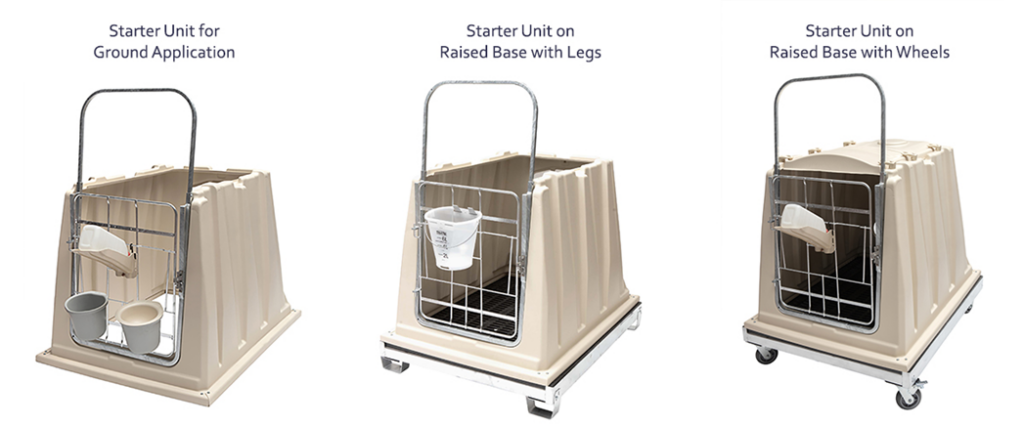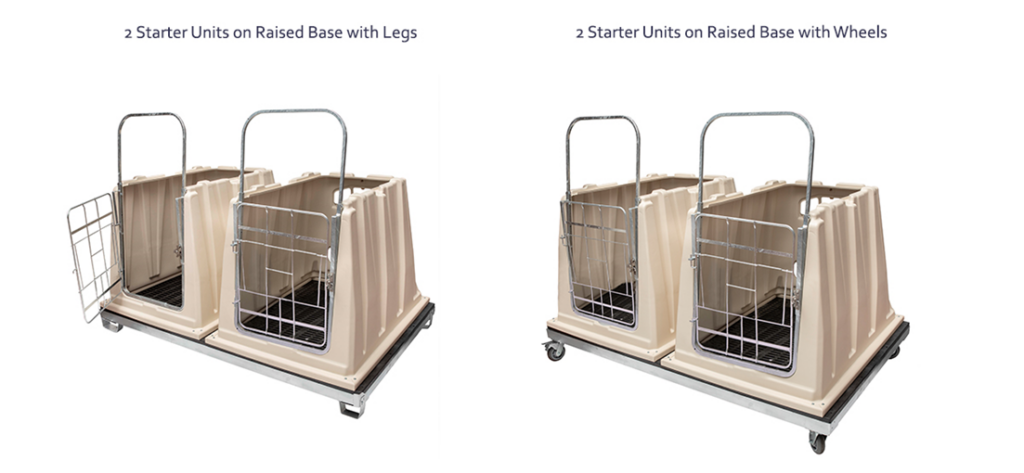by Grace Stroud

Congratulations! The next generation of your dairy has just arrived. What can we do to make sure they get a great start to a long, healthy, and productive life?
Whether you choose to allow the cow to lick her newborn or dry the calf with a towel, the calf needs stimulation to increase blood flow and get an appetite for colostrum. Cleaning the calf of the amniotic fluid will also prevent bacteria and debris in the bedding from sticking to their coat. One of the most important things to remember is that calves do not have much of an immune system at birth. That is why calf managers, veterinarians, and industry professionals like Calf-Tel stress cleanliness. The cleaner the calf and its surroundings, the healthier start the calf will have.
The calf should also have its navel dipped to eliminate the umbilical pathway for bacteria and be relocated to a clean location with minimal distractions. Having fewer distractions will reduce the calf’s stress and be beneficial as you feed colostrum.
The next step is to administer colostrum. This should be done within the first one to two hours of birth. The sooner, the better. Keywords to remember in colostrum management are: “quality, quantity, and quickness”. The longer the calf goes without colostrum, the guts’ ability to absorb the IgGs decreases. IgGs, or immunoglobins, transfer some of the mother’s immunity to the calf to help the calf build its immune system (Lopez et al., 2022). To help determine the quality of your colostrum, an optical Brix refractometer or a digital Brix refractometer work well on the farm. A Brix value of 22% needs to be the cut-off. Anything lower than that should be discarded, and anything higher than 22% can be fed or frozen for storage (Life Start, n.d.). The calf should drink at least a gallon of colostrum. Working with your vet, you can create a colostrum management plan that will work for you and your farm.

Because of their weak immune system, calf performance can be boosted by being isolated in a clean, controlled environment for 7-10 days before going to your preferred housing for the remainder of their time on milk. Spending this time alone allows the calf to get a healthy start, begin building an immune system, learn to stand on their own, and learn to drink from a bottle holder or bucket.
Cleanliness, calf performance, and ease of use for the producer drove Calf-Tel to create the S-Series Starter Systems.
The System has a low opening front gate, making it easy to gain access to the calf. Here, you can give calf hood vaccinations, help the calf learn to stand, and easily feed colostrum, or help with daily feedings, if necessary. The Calf-Tel starter bowl can easily hold 2 quarts of milk. If you prefer to pail train your calves, this shallow bowl will make it easy for calves to learn how to drink from a bucket as they are not placing their head deep into the bucket right away. Using light colored buckets for water and milk can increase fluid intake as they can see inside the bucket more easily.
The Calf-Tel Starter Series units allow you to create an environment suitable to each calf’s needs, no matter the season. The System comes with a single upper vent and 2 lower vents. With an optional roof, the calf can enjoy increased airflow in the warm seasons, additional protection in the cooler months and extra warmth with an optional heat lamp. The vents combined with the heat lamp create a warm environment with proper airflow for your newborn.


Calf-Tel’s Starter Series comes with customizable accessories to adapt to your operation. The series comes with an optional steel base, which can be fitted with legs or wheels for ease of calf movement or simply rearranging. Placing this series on the ground can help you take advantage of any heated flooring you may have, while the optional base will hold the calves slightly above the ground and help with liquid drainage from the starter system. Other accessories include chute or wire style bottle holders, and direct attach pails for water and calf starter. The Starter Series is easy to clean and sanitize, for safe and continued reuse, providing the perfect start for your youngest herd members.


Grace grew up with dairy, spending many days on the farm shadowing her dad as a herd manager. She quickly grew an appreciation and an attachment to the dairy industry, leading her to her career in ag sales and dairy farming today. Grace participated in 4-H for 10 years, competing in local, state, and national dairy judging; as well as local and state dairy quiz bowl competitions. Previously, Grace has worked in the milking parlor, with calves, and as an assistant herd manager. The assistant herd manager role included working with the dry cows, fresh cows, and any sick cows that needed special attention. Grace was also responsible for vaccinating all ages on the farm. Today, Grace enjoys raising calves, heifers, and preparing for local and national dairy shows when she is not in her office at Farmer Boy Ag.
If you have any questions or would like to contact Grace, please send all email inquiries to graces@farmerboyag.com.
SOURCES
Life Start. (n.d.). Measuring colostrum quality with a Brix refractometer is a practical method to ensure each calf gets good quality colostrum. Retrieved March 25, 2022, from https://ruminants.lifestartscience.com/colostrum-management/measuring-colostrum-quality-by-using-a-brix-refractometer
Lopez, A. J., & Heinrichs, A. J. (2022, January 27). Invited review: The importance of colostrum in the newborn dairy calf. Journal of Dairy Science. Retrieved March 25, 2022, from https://www.journalofdairyscience.org/article/S0022-0302(22)00037-6/fulltext

